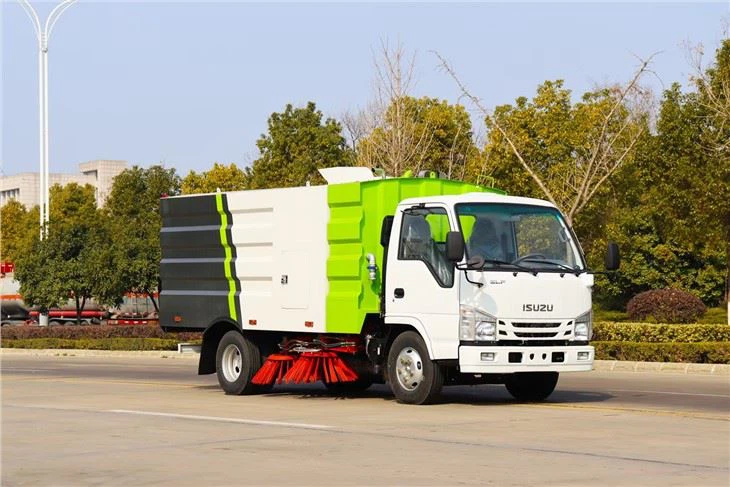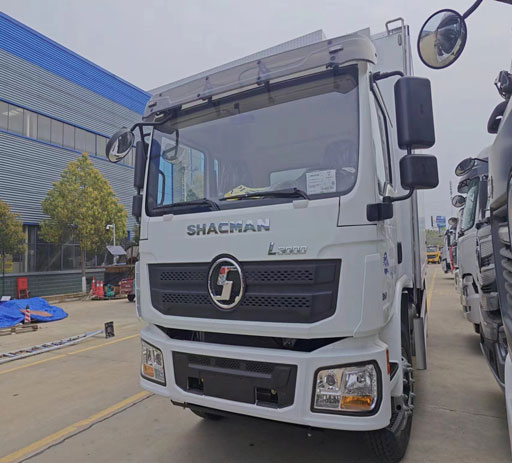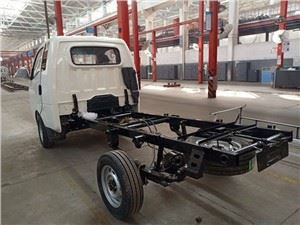Understanding Water Tankers: A Comprehensive Guide

Introduction
Water tankers play a crucial role in our daily lives, providing a vital resource for both residential and commercial purposes. Whether used in agricultural irrigation, construction, or municipal water supply, these vehicles are essential in transporting water efficiently and effectively. This article will delve into the various aspects of water tankers, including their types, uses, benefits, and maintenance. By the end of this article, you will appreciate the importance of water tankers and how they enhance our water management systems.
What is a Water Tanker?
A water tanker is a specialized vehicle designed to transport water over varying distances. These tankers come in different capacities and shapes, depending on their use case, ranging from small tankers for residential deliveries to large tankers for industrial applications. Understanding the components and functionality of a water tanker is essential when considering its purchase or use.
Types of Water Tankers
Water tankers can be classified into various types based on their design, capacity, and intended use.
1. Based on Design
- Rear Discharge Tankers: These are designed with a rear outlet, enabling easy pouring of water at the destination. Ideal for construction sites.
- Front Discharge Tankers: Utilize a front outlet to discharge water. Commonly used in municipal applications.
- Top Fill Tankers: Have a fill point on the top for loading water, suitable for large-capacity transport.
2. Based on Capacity
- Small Capacity Tankers: Typically range from 500 to 3,000 liters, perfect for domestic use.
- Medium Capacity Tankers: Hold between 3,000 to 10,000 liters, often used for commercial purposes.
- Large Capacity Tankers: Can transport up to 20,000 liters or more, ideal for industrial applications.
3. Based on Use
- Agricultural Tankers: Used for irrigation, transporting water to fields.
- Fire Fighting Tankers: Equipped with pumps and hoses to serve as a water source during firefighting efforts.
- Drinking Water Tankers: Transport potable water to areas lacking freshwater supply.
Key Components of a Water Tanker
Understanding the main components of a water tanker is essential for operation and maintenance. Here are the primary parts:
| Component | Description |
|---|---|
| Tank | The main storage compartment for holding water, made from various materials like steel or fiberglass. |
| Pump | Used to load and unload water, essential for efficient operation. |
| Hoses | Flexible tubes connected to the pump for discharging water. |
| Chassis | The framework that supports the tank, often built on a truck frame for mobility. |
| Valves | Control the flow of water into and out of the tank. |
How Water Tankers are Used

Water tankers have a wide range of applications, making them a versatile tool in various sectors.
Agriculture
Agricultural water tankers are crucial in regions reliant on irrigation. They transport water to farms, ensuring crops receive adequate hydration, especially during dry seasons.
Construction
In construction, water tankers provide the necessary water for mixing concrete, dust control, and site sanitation, promoting safety and efficiency on the job site.
Municipal Water Supply
Municipalities deploy water tankers to supply drinking water to areas facing shortages, especially in urban settings. This ensures residents have access to potable water.
Fire Services
Water tankers are equipped with pumps and hoses to deliver water in emergency situations, supporting firefighting efforts in areas lacking hydrants or water supply.
Mining Operations
In mining, water tankers assist in transporting water required for processing minerals, dust suppression, and providing basic utilities to remote sites.
Benefits of Using Water Tankers
Water tankers offer several advantages, making them an essential resource in many sectors.
1. Flexibility and Mobility
Water tankers can be deployed quickly to different locations, facilitating water supply in remote areas or during emergencies.
2. Cost-Effective Solution
Transporting water via tankers can be more economical than drilling wells or constructing pipelines, especially for temporary needs.
3. Multi-Purpose Use
Water tankers can cater to various needs—agricultural, industrial, and domestic—making them a versatile water solution.
4. Environmental Efficiency
Utilizing water tankers reduces waste by delivering water where it’s needed, aiding in the conservation of this precious resource.
5. Emergency Response
In natural disasters or water shortages, tankers can deliver water efficiently and quickly, providing immediate relief to affected areas.
How to Choose the Right Water Tanker
Choosing the right water tanker depends on several factors, including capacity, purpose, and budget. Here are some essential considerations:
1. Determine Your Water Needs
Assess how much water you need to transport regularly. This will help you choose the right tanker size.
2. Consider Usage Frequency
If you require a water tanker frequently, investing in a robust and durable model may be worthwhile. For infrequent use, renting might be more cost-effective.
3. Evaluate the Terrain
The type of terrain you will operate in may impact your choice. Ensure the tanker can navigate effectively in your specific environment.
4. Check Compliance with Regulations
Ensure that the tanker complies with local regulations and standards for water transport, especially if carrying potable water.
5. Assess Maintenance Requirements
Choose a model that is easy to maintain, with readily available parts and service options to minimize downtime.
Maintenance Tips for Water Tankers
1. Regular Cleaning
Clean the tank regularly to prevent contamination, especially if transporting drinking water. Use non-toxic cleaning solutions and rinse thoroughly.
2. Inspect Components
Periodically check hoses, pumps, and valves for wear and tear. Replace worn parts promptly to avoid leaks and possible failure.
3. Monitor Fluid Levels
Keep an eye on oil and fuel levels to ensure optimal performance. Check for leaks and refill as necessary.
4. Test the Pump
Ensure the pump is working efficiently by running tests before transporting water. Address any issues immediately to avoid operational delays.
5. Schedule Professional Maintenance
Arrange for regular inspections by a qualified technician to catch potential problems before they become critical.
Common Myths About Water Tankers

There are several misconceptions about water tankers. Let’s clear a few:
1. They Are Only Used for Emergencies
While they are crucial during emergencies, water tankers serve numerous functions, including regular deliveries for agriculture, construction, and municipal needs.
2. All Tankers Are the Same
Water tankers come in various designs, sizes, and functionalities. Choosing the correct type for specific applications is essential.
3. Usage is Complicated
Most water tankers are designed for ease of use and can be operated with basic training. Familiarizing oneself with the vehicle is sufficient for operation.
FAQ Section
1. What is the average capacity of a water tanker?
Water tankers can range anywhere from 500 liters for small models to over 20,000 liters for large industrial models.
2. How do I know if a tanker is suitable for drinking water?
Look for tankers labeled as suitable for potable water and ensure they have been built from safe materials that won’t contaminate the water.
3. Can water tankers handle wastewater?
Yes, some tankers are specifically designed for carrying wastewater or sewage. These models have additional features to prevent contamination and odor issues.
4. What materials are water tankers made from?
Common materials include stainless steel, fiberglass, and polyethene, each offering different advantages like durability, weight, and resistance to corrosion.

5. How is water discharged from a tanker?
Water is typically discharged through pumps and hoses connected to the tanker. The type of discharge can vary based on the tanker design.
6. Is it possible to rent a water tanker?
Yes, many companies offer water tanker rentals for both short and long-term needs, providing flexibility for temporary projects or emergencies.
